Recently Ive come under attack for my stance on trees. Two forum members in particular have been especially underhanded with their attacks. These two would have you believe that IÂm some hateful anti-environmental fiend just because IÂm gleeful about having a diseased old oak in my back yard cut down. A tree that IÂve been told by tree experts is a danger to my family and neighbors.
For the record I donÂt hate trees. In fact I think trees are very useful in the landscape (obviously). However, as a rosarian the roses come first. Trees throw shade and suck up a lot of soil nutrients: two things that put them at odds with what is essentially a sun loving woody shrub. Lush, profusely blooming roses growing in the deep shade of a majestic forest is only "real" in Disney movies like Beauty-and-the-Beast. Yes there are some roses that can be grown in partial shade but donÂt fool yourselves. The very same lovely roses would be bigger, have more foliage, be less susceptible to disease, and would bloom more in full sun.
Roses and trees do not like each other.
So with all that said here are some of my favorite trees:
Chaste Tree (Vitex) - has fragrant powder blue flower all season long. Interesting foliage and matures at 10-15 feet (smaller in zone 6). Used extensively at Bush Gardens.
Crape Myrtle (Lagerstromia) - okay some are big but there are lots of dwarf to medium sized cultivars, many developed by our US National Arboretum. Some are even fragrant. My favorites are Lipan (grows 13-20 ft with lavender flowers and gorgeous non-peeling white bark) and Acoma (grow 10 feet tall with lightly fragrant pristine white flowers). To read more about USNA crape myrtles go to http://www.usna.usda.gov/Newintro/index.html.
Fruit Trees (apple, pear & cherry) Â who doesnÂt like fruit trees? For the rose gardener these trees can be trained as an espalier along a fence (heck they can be trained into fences themselves). Saves a LOT of space and doesnÂt shade the roses. If you like colorful songbirds then fruit trees will bring them in by the dozens (theyÂll eat all your fruit though). My favorite among this group are the sour cherries. There are even a few modern hybrids that are sweet enough to be eaten out of hand. If you donÂt have the patience for espaliering then try growing them on dwarf rootstock. Such trees mature at 10 to 15 feet and produce lots of luscious fruit.
Ornamental Cherry (Prunus spp.) - I absolutely adore these trees. They have shiny bark, gorgeous flowers in early spring, and attractive foliage that have autumnal color. Now to be honest they aren't small trees but if you have a large enough property to accommodate a tree with a 20-30 foot spread (at maturity) then you just can't go wrong with a flowering cherry. My favorites are the weeping cherry with doubled flowers (P. subhirtella pendula var. Flora-Plena), the repeat flowering Higan Cherry (p. subhirtella var. Autumnalis), the Yoshino cherry (you'll see lots of these around the Tidal Basin in Washington DC), and the Kwanzan cherry (has bright pink flowers that look like fluffy miniature roses). IÂve seen the weeping cherry available on dwarfing rootstock for those with limited space.
Whitespire Birch (Betula populifolia, var. Whitespire senior) - I love this tree! I have one in my front yard. Although the biggest tree on this list, with a mature height of 30-40 feet, it is the PERFECT choice for a rose gardener because of the lacy canopy that allows dappled sunlight to reach the garden flower, thusly enabling a wide variety of companion plants, including shade tolerant roses. It actually prefers clay soil. Yes!!! The tree has a shallow root system so limit your planting to bulbs in the immediate area around the trunk. Mine has blue festival hyacinths (a multi-stemmed sport of the common Dutch hyacinth) planted around the base. You get four season appeal with this birch. The soft green foliage turns bright gold in autumn and the bright white bark with its contrasting black triangles widely spaced along the limbs is attractive year round but especially so in winter (when it snows ... OMG!). The only catch is that it is so popular that many imposters have sprung up in the market, most of which aren't resistant to the insects that like to dine on white birch trees. Look in catalogs for "Whitespire senior". These trees are the direct result of cuttings taken from the original tree found in MI. Oh and Whitespire Birch is more heat tolerant than other white birches so it can be grown over a wider climatic range. This tree is extremely beautiful when grown with multiple trunks (mine has five radiating from the base).
Regardless which tree you choose to grow with your roses please try to be a good neighbor. It is rude to plant a tree at near the property line (espalier fruit trees are the exception because they grow along a flat horizontal plane). In fact the tree boughs should never cross that line. Designwise keep the size of your property in mind. Small lots should have dwarf trees. The European park look with the long avenues of cathedral like trees or that "Gone with the Wind" plantation oak should really be limited to folks who live on acreage.
Best wishes,
Patrick
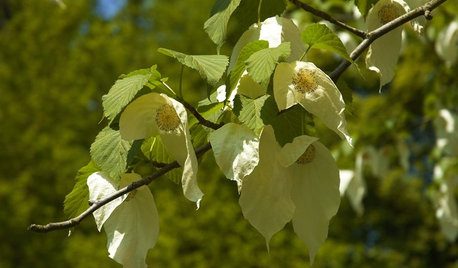

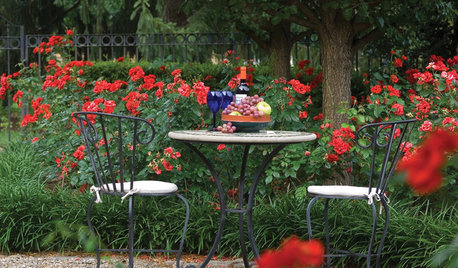



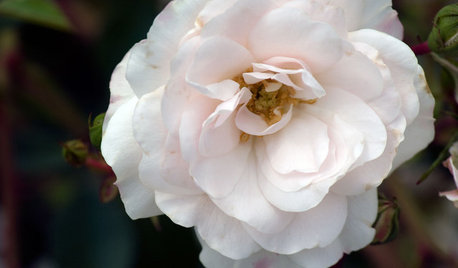
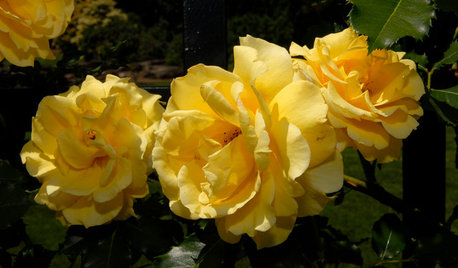





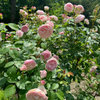
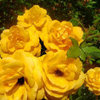


gnabonnand
peachiekean
Related Discussions
Roses near trees
Q
Why Do People Grow Roses Into Trees?
Q
Climbing rose under tree
Q
Please help me choose roses for tree guards!
Q
mandi_s1
jaxondel
iowa_jade
dublinbay z6 (KS)
sam0738
julie22
katefisher
geo_7a
brandyray
harryshoe zone6 eastern Pennsylvania
barbarag_happy
devon_gardener